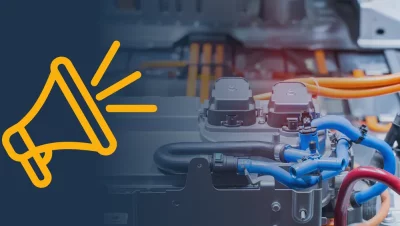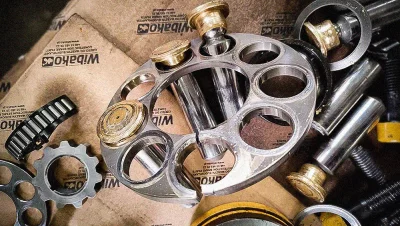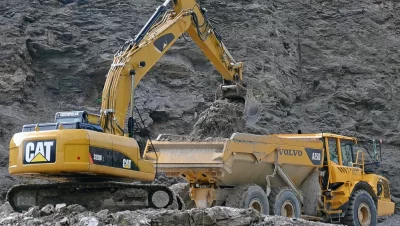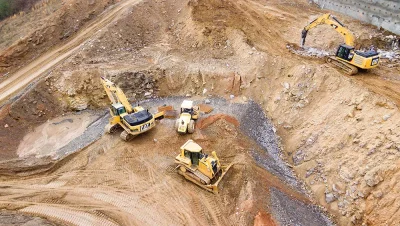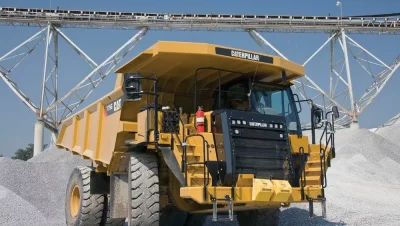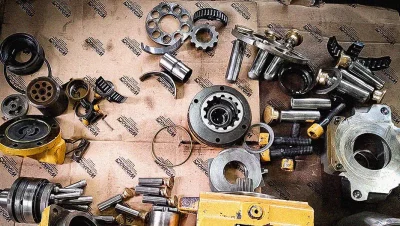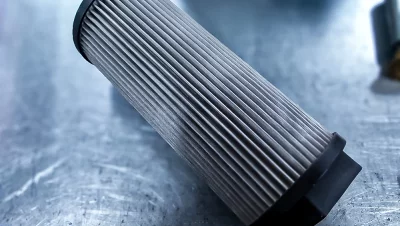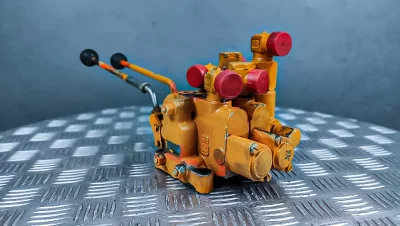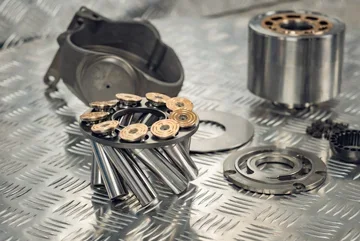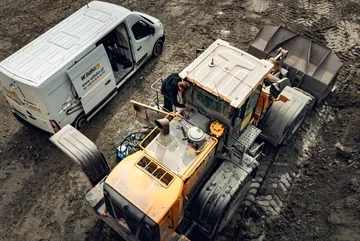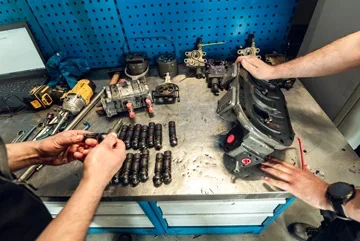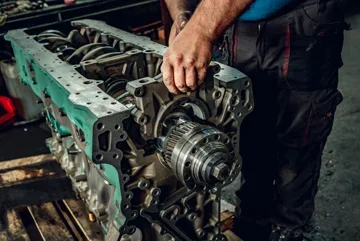No pressure and a drop in hydraulic system performance?
These are symptoms that can have many causes – but most often the pump turns out to be the culprit. In this entry, we will discuss the detailed verification of the hydraulic pump from Komatsu W430 loader, which was sent to our service. What were the symptoms? What did we discover after disassembly? And why did the client decide to purchase a new unit?
Diagnosis: damaged Komatsu pump
The client's machine started to lose performance, so a decision was made to disassemble and send the pump to Wibako. Even during the initial inspection, it was clear that something was wrong – damaged filter, missing components, and clear signs of wear.
Disassembly stage – step by step
We started by disassembling the regulators and the cover. Next, with the help of special pullers, we removed the shaft and bearings. In this model (older generation), it was also necessary to assess the condition of the balls and sockets in the housing – and that’s where the biggest problem was hidden.
Main damages:
- Seized ball sockets – complete lack of working surface
- Damaged tilt plate
- Worn pistons and piston control
- Welded ball – no play, significant wear
The pump was no longer able to maintain the appropriate pressure – the working components were destroyed to such an extent that fluid and tight operation was impossible.
Why is modernization worth it?
In the new generation of these pumps, replaceable mushrooms are used instead of balls mounted directly in the housing. This means that in case of wear, it is not necessary to replace the entire housing – just the mushrooms themselves need to be replaced. This solution significantly reduces the costs of future repairs.
Repair cost vs purchasing a new pump
After a full analysis, it turned out that:
- the following need replacement: housing, tilt plate, pistons, control piston, sockets, and both balls,
- the cost of regeneration exceeds the economic sense of repair.
The client decided to purchase a new pump from our stock, which was appropriately re-equipped (connections, nipples) and tested before shipment.
Looking for a pump for Komatsu?
In our offer, you will find:
- brand new pumps for Komatsu and other brands,
- complete repair kits,
- pistons, tilt plates, sockets, regulators, and other components of hydraulic systems.
Contact our sales department – we will select a pump for your machine and ensure fast shipping.
The entire video can be seen here.



